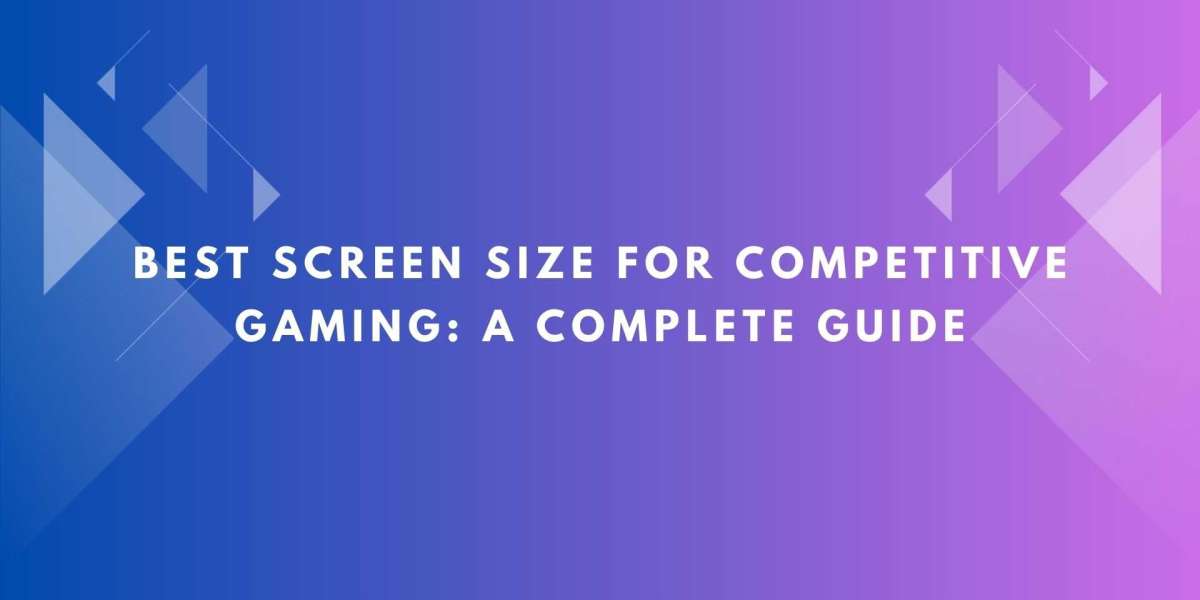Why Screen Size Matters in Competitive Gaming
Competitive gaming is all about speed, precision, and situational awareness. Unlike casual gaming, professional gamers need screens that allow them to see details clearly, track fast movements, and respond instantly. A screen that is too large may require excessive head movement and slow down reactions, while a screen that is too small can make it difficult to identify targets or read in-game information.
Screen size, combined with resolution and refresh rate, directly impacts visual performance. High refresh rate monitors, such as 144Hz or 240Hz, paired with the correct screen size, provide smooth motion and reduce input lag. Using a screen size calculator can help identify the ideal display dimensions based on your seating distance and gaming style.
Optimal Screen Size for Different Gaming Scenarios
Esports Titles
Games like first-person shooters, real-time strategy, and battle arena games require rapid eye movement and precise targeting. For these genres, monitors between 24 to 27 inches are generally considered ideal. They allow you to see the entire play area without moving your head excessively.MMORPGs and Open World Games
For immersive role-playing games and open world experiences, larger screens between 27 to 32 inches can enhance visual enjoyment. These games benefit from increased screen real estate to display expansive maps, HUD elements, and detailed graphics.Racing and Flight Simulators
Simulators thrive on wide and panoramic views. Ultrawide monitors with 34 to 38 inches provide the peripheral vision needed for an immersive experience. Although these monitors may not be ideal for competitive esports due to head movement, they are excellent for simulation games.
Key Factors to Consider
Viewing Distance
For competitive gaming, the recommended viewing distance is typically between 18 to 30 inches for 24 to 27 inch monitors. Sitting too close on a larger screen may force constant head movement, while sitting too far can reduce reaction times.Resolution
High resolution, such as 1440p or 4K, ensures sharp images. For fast-paced competitive gaming, 1080p on a 24 to 27 inch monitor strikes a balance between clarity and performance. Higher resolutions require more powerful graphics cards to maintain high frame rates.Refresh Rate
Competitive gamers should aim for monitors with at least 144Hz refresh rates. Higher refresh rates provide smoother motion and can improve accuracy in high-speed games.Aspect Ratio
Most competitive gaming monitors use a standard 16:9 aspect ratio, which offers a familiar and optimized field of view. Ultrawide screens may be advantageous in certain genres but can introduce distortion or require additional head movement in competitive play.Ergonomics
Position your monitor so that the top third is at eye level. Adjust height, tilt, and distance to reduce neck strain. Using adjustable stands or monitor arms can help achieve the perfect setup.
How to Use a Screen Size Calculator for Gaming
Measure Your Desk and Seating Position
Determine the distance between your eyes and the monitor. Accurate measurements ensure that the recommended screen size fits comfortably within your workspace.Select Your Gaming Resolution
Input your monitor resolution into the calculator. For competitive gaming, 1080p or 1440p is often preferred for high refresh rates.Input Viewing Distance
Enter the measured distance from your seat to the monitor. The calculator will factor this into determining the optimal screen size that allows full visibility without unnecessary head movement.Adjust for Gaming Style
Consider the type of games you play most frequently. Competitive shooters may require smaller screens, while RPGs or simulators may benefit from larger screens or ultrawide displays.Finalize Your Setup
The calculator will provide a recommended diagonal screen size and width. Use this information to select a monitor that maximizes performance and comfort.
Tips for Competitive Gaming
Use Multiple Monitors Strategically
Some gamers use dual monitors, but in competitive play, the main monitor should always be prioritized for reaction time and focus.Minimize Distractions
Ensure your setup avoids glare, reflections, or bright backgrounds that can impact visual clarity.Pair with High-Performance Hardware
A fast graphics card, low-latency peripherals, and proper cooling are essential to complement your ideal screen size.Test Before Committing
Using masking tape or cardboard cutouts can help you visualize how the screen fits within your space and ensure optimal comfort.
Conclusion
Selecting the best screen size for competitive gaming is a blend of art and science. By understanding viewing distance, resolution, refresh rate, and game type, you can make informed decisions that improve both comfort and performance. XTEN-AV emphasizes precision in AV setups, and using tools like screen size calculators can help gamers achieve the perfect balance. Investing time into selecting the right screen size ensures that you stay competitive, immersed, and ready to react in every gaming scenario.
Read more: https://palkwall.com/read-blog/52118








